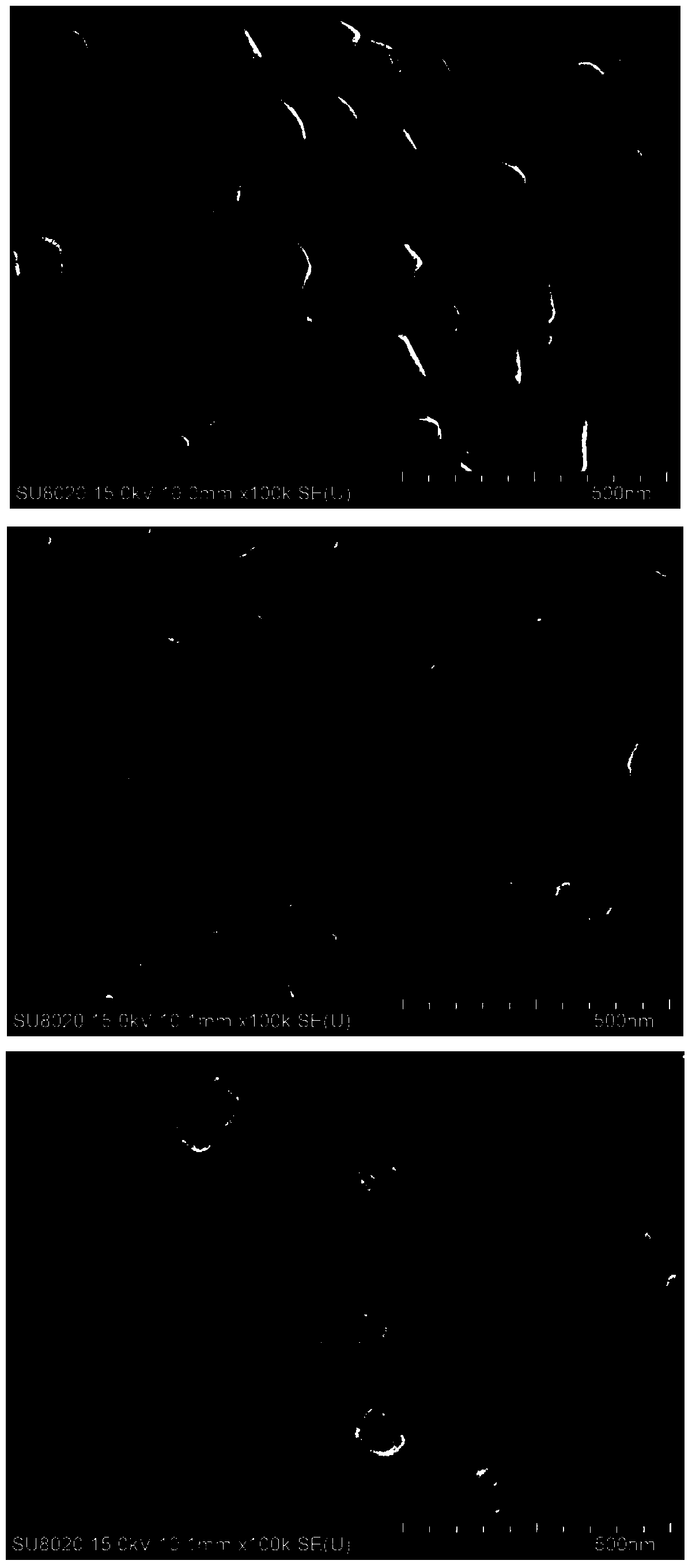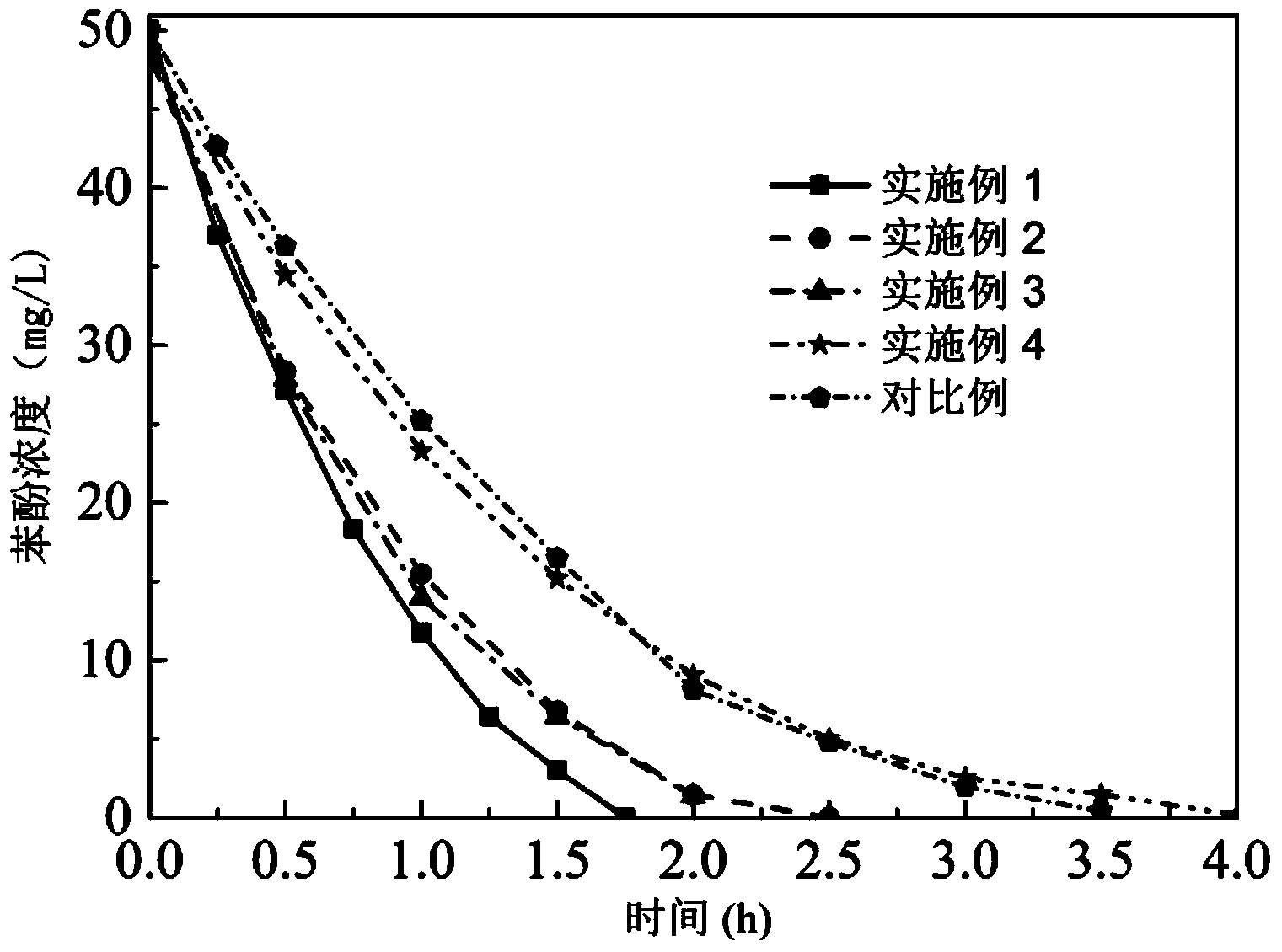Preparation and application of Sb-Ni-Nd co-doping SnO2 high catalytic activity positive electrode
A high catalytic activity, sb-ni-nd technology, applied in the field of preparation, microporous anode, tin dioxide microporous anode, can solve the problem of less multi-element co-doping, achieve large specific surface area, improve catalytic activity and Mechanical stability, simple and efficient method
- Summary
- Abstract
- Description
- Claims
- Application Information
AI Technical Summary
Problems solved by technology
Method used
Image
Examples
Embodiment 1
[0027] 1. Pretreatment of mp-Ti substrate: soak the mp-Ti board in 40% NaOH at 80°C for 2 hours to remove oil, wash it with distilled water until neutral; soak it in 15% oxalic acid solution, and keep it at 98°C for 2 hours , let cool at room temperature, rinse with double distilled water and set aside.
[0028] 2. Fully mix citric acid and ethylene glycol, and stir at 55°C to 65°C until completely dissolved. After the sol is initially formed, continue to stir at 85°C to 95°C for 30 minutes to obtain a stable sol.
[0029]3. Add an appropriate amount of SnCl to the sol prepared in 2. 4 ·5H 2 O and SbCl 3 , stir evenly, and then add an appropriate amount of NiSO 4 ·6H 2 O and NdCl 3 ·6H 2 O. After fully stirring and mixing, place at 85°C to 95°C for 30 minutes to obtain a stable and uniform sol, which is ready for use. Wherein the molar ratio of Sn:Sb:Ni:Nd is (650~670):200:100:6.5:1:0.5.
[0030] 4. Using the dipping-coating method, dip the mp-Ti plate pretreated in st...
Embodiment 2
[0033] Embodiment 2: (Sn:Sb:Ni:Nd molar ratio is 100:6.5:1:1, other conditions are the same as embodiment 1)
[0034] 1. Pretreatment of mp-Ti substrate: soak the mp-Ti board in 40% NaOH at 80°C for 2 hours to remove oil, wash it with distilled water until neutral; soak it in 15% oxalic acid solution, and keep it at 98°C for 2 hours , let cool at room temperature, rinse with double distilled water and set aside.
[0035] 2. Fully mix citric acid and ethylene glycol, and stir at 55°C to 65°C until completely dissolved. After the sol is initially formed, continue to stir at 85°C to 95°C for 30 minutes to obtain a stable sol.
[0036] 3. Add an appropriate amount of SnCl to the sol prepared in 2. 4 ·5H 2 O and SbCl 3 , stir evenly, and then add an appropriate amount of NiSO 4 ·6H 2 O and NdCl 3 ·6H 2 O. After fully stirring and mixing, place at 85°C to 95°C for 30 minutes to obtain a stable and uniform sol, which is ready for use. Wherein the molar ratio of Sn:Sb:Ni:Nd is...
Embodiment 3
[0040] Embodiment 3: (Sn:Sb:Ni molar ratio is 100:6.5:1, other conditions are the same as embodiment 1)
[0041] 1. Pretreatment of mp-Ti substrate: soak the mp-Ti board in 40% NaOH at 80°C for 2 hours to remove oil, wash it with distilled water until neutral; soak it in 15% oxalic acid solution, and keep it at 98°C for 2 hours , let cool at room temperature, rinse with double distilled water and set aside.
[0042] 2. Fully mix citric acid and ethylene glycol, and stir at 55°C to 65°C until completely dissolved. After the sol is initially formed, continue to stir at 85°C to 95°C for 30 minutes to obtain a stable sol.
[0043] 3. Add an appropriate amount of SnCl to the sol prepared in 2. 4 ·5H 2 O and SbCl 3 , stir evenly, and then add an appropriate amount of NiSO 4 ·6H 2 O. After fully stirring and mixing, place at 85°C to 95°C for 30 minutes to obtain a stable and uniform sol, which is ready for use. Wherein the molar ratio of Sn:Sb:Ni is 100:6.5:1.
[0044] 4. Usin...
PUM
 Login to View More
Login to View More Abstract
Description
Claims
Application Information
 Login to View More
Login to View More - R&D
- Intellectual Property
- Life Sciences
- Materials
- Tech Scout
- Unparalleled Data Quality
- Higher Quality Content
- 60% Fewer Hallucinations
Browse by: Latest US Patents, China's latest patents, Technical Efficacy Thesaurus, Application Domain, Technology Topic, Popular Technical Reports.
© 2025 PatSnap. All rights reserved.Legal|Privacy policy|Modern Slavery Act Transparency Statement|Sitemap|About US| Contact US: help@patsnap.com



